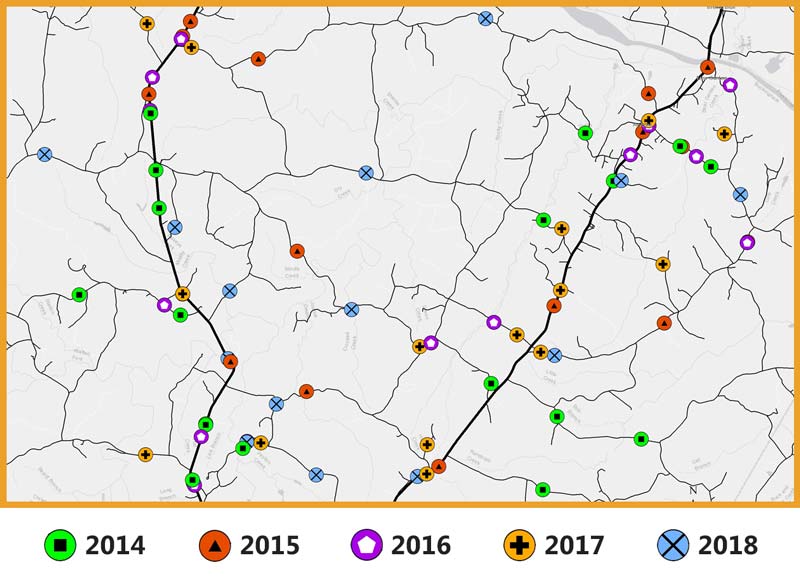U.S. Department of Transportation
Federal Highway Administration
1200 New Jersey Avenue, SE
Washington, DC 20590
202-366-4000
According to 23 USC 148(a)(12), the term "systemic safety improvement" means an improvement that is widely implemented based on high risk roadway features that are correlated with particular crash types, rather than crash frequency.
Crash locations are random. Crash types are not. A fundamental challenge on rural roads is that roadway departure (aka lane departure) crash locations are random and tend to change from year to year. It is not cost-effective to apply countermeasures where crashes already happened when they are unlikely to happen again at the same location in the near future.

What if you could use your crash data along with knowledge of your roadway to identify risk factors? Then you could systemically apply countermeasures where crashes are most likely to occur in the future! There are multiple systemic analysis tools to help identify risk factors.
To learn more about the systemic approach, visit the FHWA systemic safety web page. The FHWA has developed a 4-hour training course on the systemic approach. Contact your LTAP Center, State DOT, or FHWA Division Office to request the training at a location near you.
FoRRRwD is supported by four pillars that work together to reduce rural roadway departures on all roads. Click a pillar below to learn more.
Roadway departure crashes are a major problem on all public rural roads. More than 40 percent of them happen off State networks.
There are many flexible cost-effective countermeasures that are proven to reduce these crashes.
A fundamental challenge on rural roads is that roadway departure crash locations are random and change from year to year.
Documenting the systemic analysis into a simple safety action plan is a powerful way to prioritize safety improvements.
